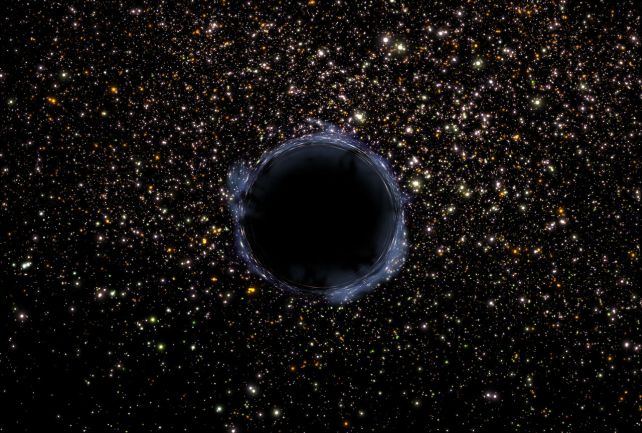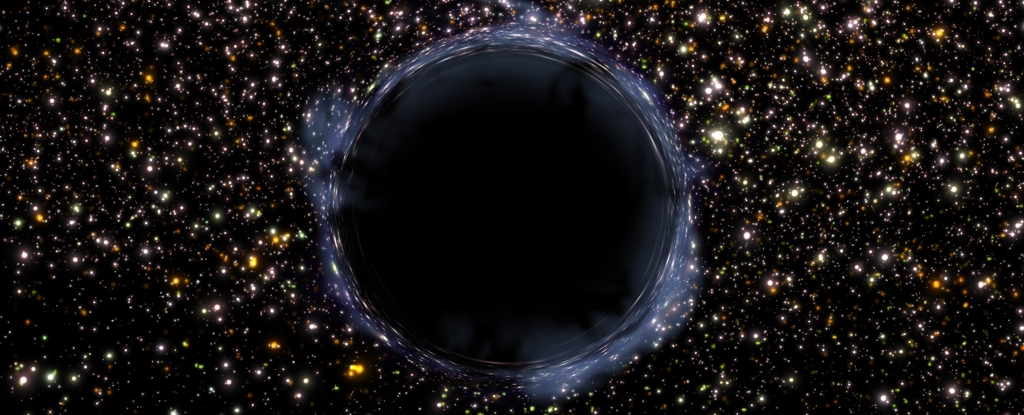The Milky Way should be teeming with small black holes. Somewhere out there, lurking in the corners of the galaxy, an estimated 10 million to 1 billion stellar mass black holes are thought to be just hanging out, dark and mysterious.
Because we can’t usually see them, unless they’re active, we can’t take a census. Nor do we know where in the Milky Way they are. We only know of around 20 stellar mass black holes in our galaxy, with the closest candidate to Earth sitting at around 1,565 light-years away.
But a new study suggests that they could be a lot closer than we knew – right, in fact, on our cosmic doorstep.
By analyzing and modeling the Hyades cluster, a group of stars located 150 light-years away, a team of astronomers has found that there could be two or three stellar mass black holes hiding therein.
frameborder=”0″ allow=”accelerometer; autoplay; clipboard-write; encrypted-media; gyroscope; picture-in-picture; web-share” allowfullscreen>
“Our simulations can only simultaneously match the mass and size of the Hyades if some black holes are present at the center of the cluster today (or until recently),” says astrophysicist Stefano Torniamenti of the University of Padua in Italy.
The Hyades, visible to the naked eye in the night sky in the constellation of Taurus, is what is known as an open cluster – a group of stars that share the same characteristics, moving together through space in a gravitationally bound blob.
Each open cluster is basically a family of sibling stars, all born from the same huge molecular cloud, hanging out together before eventually going their separate ways.
The Hyades is thought to be around 625 million years old, and contains hundreds of stars, with those at the greatest distance from the center apparently starting to break away, and those at the center grouped the most densely.
In these densely packed environments, stars are expected to jostle each other at a higher rate than you’d see in less populated stellar environments, resulting in a higher rate of collisions and mergers.
Here, in the hearts of star clusters, astronomers predict that black holes can be found, the ultimate products of these interactions. We’ve seen hints of them, in other kinds of clusters, but because black holes don’t give off any light unless they’re actively munching on star-flesh, finding them is a challenge.
Torniamenti and his colleagues conducted their search of the Hyades in a more indirect fashion. They modeled the mass and stellar motions of the cluster using data from Gaia, a satellite mapping the three-dimensional positions and velocities of the stars in the Milky Way.
Then, they performed simulations to try and reproduce these observations. They found that their simulations were the closest match to the observed cluster when they included two or three stellar mass black holes in the mix.
These black holes are either still present in the cluster, or were ejected less than 150 million years ago, which means they would be now hovering around its outskirts. This recent ejection would mean that the signs of the black holes’ gravitational effects would still linger in the cluster core.
Of the black holes themselves, the researchers were not able to identify precise locations. But the finding, they say, is strongly indicative that the Hyades contains the closest candidate black holes to the Solar System, more than 10 times closer than the previous candidate.
We’re not, to be clear, in any danger from them; the researchers found that the fastest any of these black holes could be moving was 3 kilometers per second; even if they were traveling in our direction, it would take them a very, very long time to get here.
And anyway, black holes have no greater gravitational pull than any star of equivalent mass. So we’re in no more danger from rogue stellar mass black holes than rogue stars of the same mass. Sure, we wouldn’t see it coming, but what are we going to do in either case?

Rather, the discovery helps us better understand the invisible population of stellar mass black holes in the Milky Way.
“This observation helps us understand how the presence of black holes affects the evolution of star clusters and how star clusters in turn contribute to gravitational wave sources,” says astrophysicist Mark Gieles of the University of Barcelona.
“These results also give us insight into how these mysterious objects are distributed across the galaxy.”
The research has been published in the Monthly Notices of the Royal Astronomical Society.





